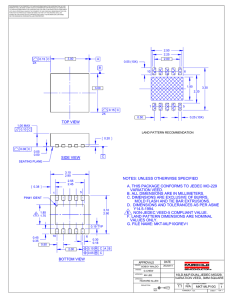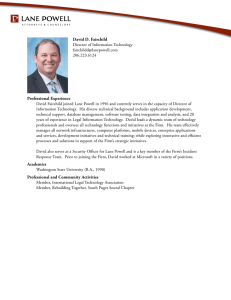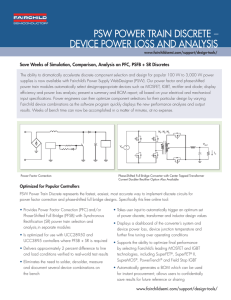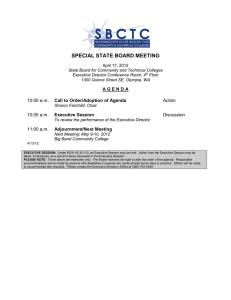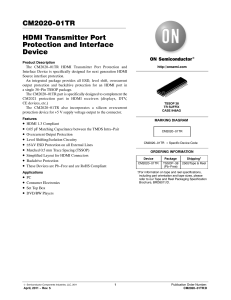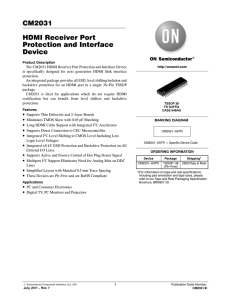App Note Template
advertisement
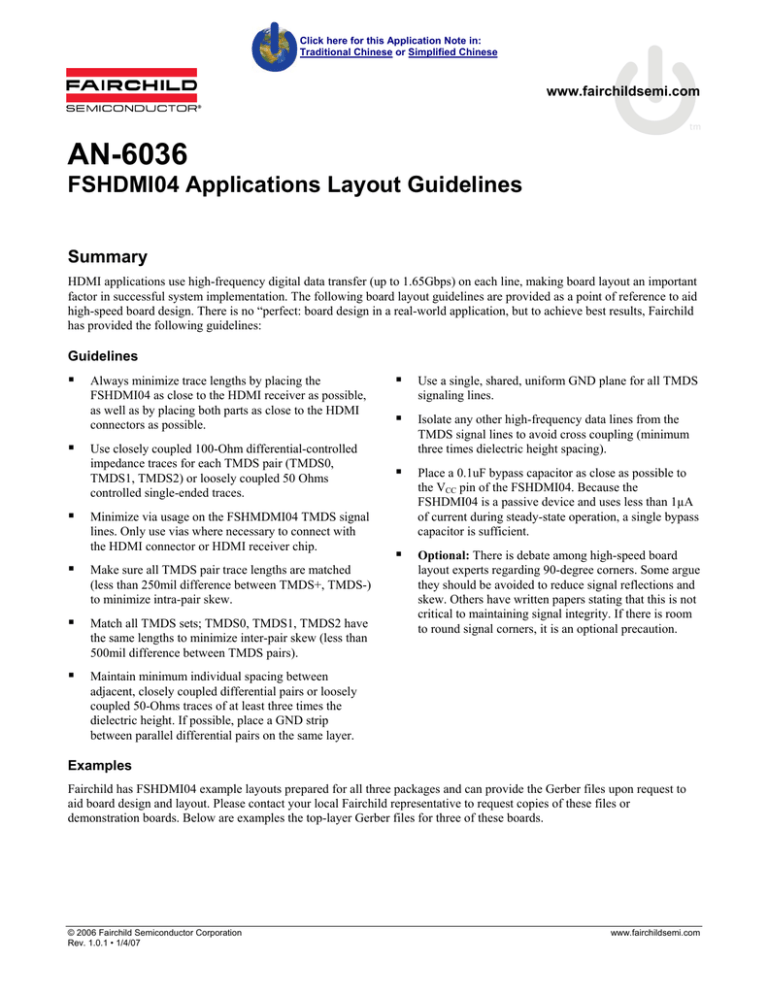
Click here for this Application Note in: Traditional Chinese or Simplified Chinese www.fairchildsemi.com AN-6036 FSHDMI04 Applications Layout Guidelines Summary HDMI applications use high-frequency digital data transfer (up to 1.65Gbps) on each line, making board layout an important factor in successful system implementation. The following board layout guidelines are provided as a point of reference to aid high-speed board design. There is no “perfect: board design in a real-world application, but to achieve best results, Fairchild has provided the following guidelines: Guidelines Always minimize trace lengths by placing the FSHDMI04 as close to the HDMI receiver as possible, as well as by placing both parts as close to the HDMI connectors as possible. Use closely coupled 100-Ohm differential-controlled impedance traces for each TMDS pair (TMDS0, TMDS1, TMDS2) or loosely coupled 50 Ohms controlled single-ended traces. Minimize via usage on the FSHMDMI04 TMDS signal lines. Only use vias where necessary to connect with the HDMI connector or HDMI receiver chip. Make sure all TMDS pair trace lengths are matched (less than 250mil difference between TMDS+, TMDS-) to minimize intra-pair skew. Match all TMDS sets; TMDS0, TMDS1, TMDS2 have the same lengths to minimize inter-pair skew (less than 500mil difference between TMDS pairs). Maintain minimum individual spacing between adjacent, closely coupled differential pairs or loosely coupled 50-Ohms traces of at least three times the dielectric height. If possible, place a GND strip between parallel differential pairs on the same layer. Use a single, shared, uniform GND plane for all TMDS signaling lines. Isolate any other high-frequency data lines from the TMDS signal lines to avoid cross coupling (minimum three times dielectric height spacing). Place a 0.1uF bypass capacitor as close as possible to the VCC pin of the FSHDMI04. Because the FSHDMI04 is a passive device and uses less than 1µA of current during steady-state operation, a single bypass capacitor is sufficient. Optional: There is debate among high-speed board layout experts regarding 90-degree corners. Some argue they should be avoided to reduce signal reflections and skew. Others have written papers stating that this is not critical to maintaining signal integrity. If there is room to round signal corners, it is an optional precaution. Examples Fairchild has FSHDMI04 example layouts prepared for all three packages and can provide the Gerber files upon request to aid board design and layout. Please contact your local Fairchild representative to request copies of these files or demonstration boards. Below are examples the top-layer Gerber files for three of these boards. © 2006 Fairchild Semiconductor Corporation Rev. 1.0.1 • 1/4/07 www.fairchildsemi.com AN-6036 APPLICATION NOTE Example Layouts FSHDMI04 QVSOP Layout Top and Bottom view FSHDMI04 TSSOP Layout Top and Bottom view © 2006 Fairchild Semiconductor Corporation Rev. 1.0.1 • 1/4/07 www.fairchildsemi.com 2 AN-6036 APPLICATION NOTE FSHDMI04MLP Layout Top and Bottom view DISCLAIMER FAIRCHILD SEMICONDUCTOR RESERVES THE RIGHT TO MAKE CHANGES WITHOUT FURTHER NOTICE TO ANY PRODUCTS HEREIN TO IMPROVE RELIABILITY, FUNCTION, OR DESIGN. FAIRCHILD DOES NOT ASSUME ANY LIABILITY ARISING OUT OF THE APPLICATION OR USE OF ANY PRODUCT OR CIRCUIT DESCRIBED HEREIN; NEITHER DOES IT CONVEY ANY LICENSE UNDER ITS PATENT RIGHTS, NOR THE RIGHTS OF OTHERS. LIFE SUPPORT POLICY FAIRCHILD’S PRODUCTS ARE NOT AUTHORIZED FOR USE AS CRITICAL COMPONENTS IN LIFE SUPPORT DEVICES OR SYSTEMS WITHOUT THE EXPRESS WRITTEN APPROVAL OF THE PRESIDENT OF FAIRCHILD SEMICONDUCTOR CORPORATION. As used herein: 1. Life support devices or systems are devices or systems which, (a) are intended for surgical implant into the body, or (b) support or sustain life, or (c) whose failure to perform when properly used in accordance with instructions for use provided in the labeling, can be reasonably expected to result in significant injury to the user. © 2006 Fairchild Semiconductor Corporation Rev. 1.0.1 • 1/4/07 2. A critical component is any component of a life support device or system whose failure to perform can be reasonably expected to cause the failure of the life support device or system, or to affect its safety or effectiveness. www.fairchildsemi.com 3
